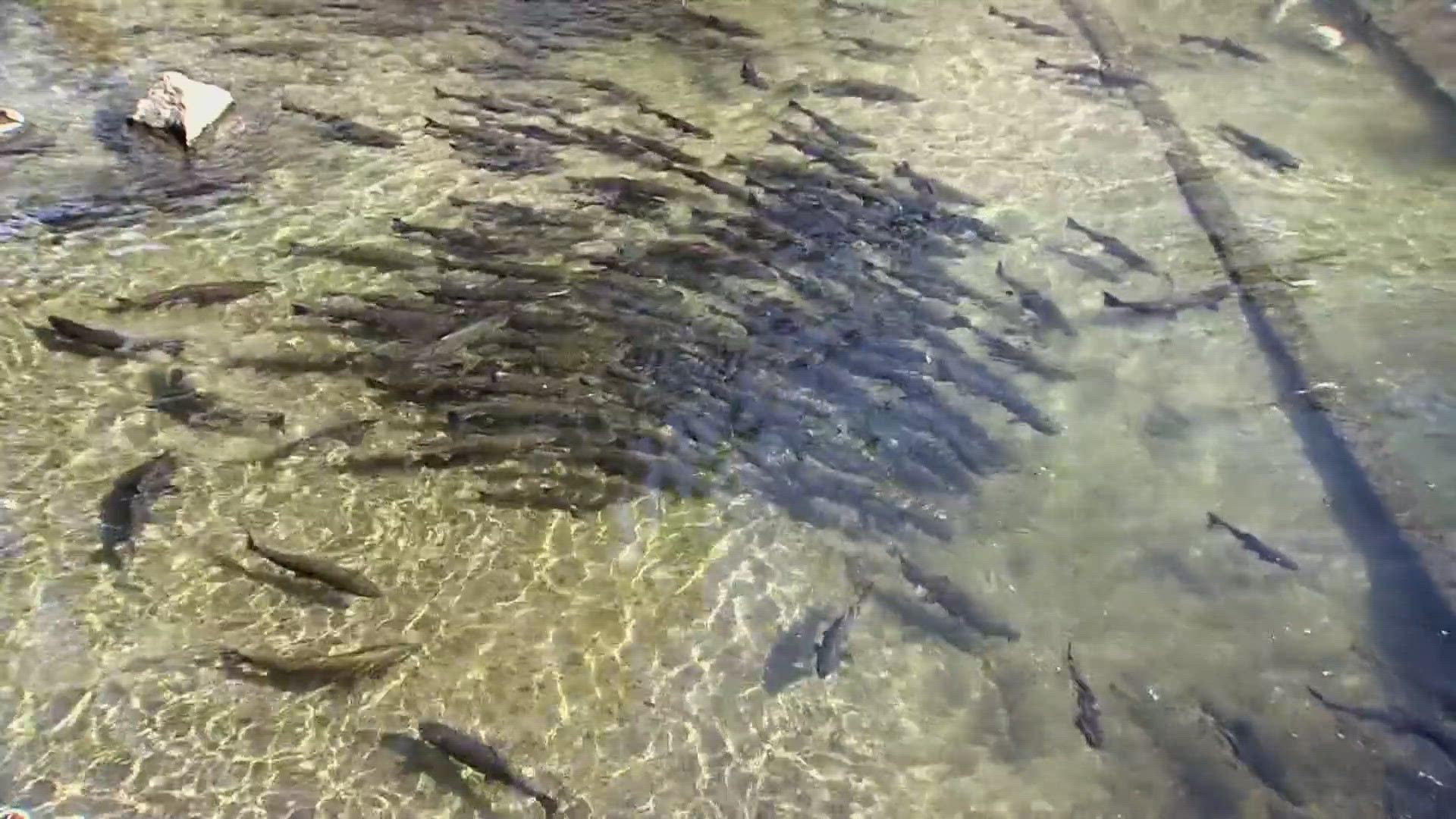SEATTLE — A new study by researchers at the University of Washington used "environmental DNA" to assess where culvert replacements helped increase fish passage.
Researchers utilized a technique they hope could be more cost-efficient and less time-intensive for decision-making by policymakers.
"This research was really focused around how we might move toward better tools for environmental monitoring, specifically things that have human impacts that require an environmental impact assessment," said researcher Eily Allan, Ph.D. "We were excited to try to move toward a better, cheaper, faster method to try to get agencies the best information they'd need to make a decision."
Researchers from UW and the National Oceanic and Atmospheric Administration (NOAA) assessed two culvert replacements to see whether more fish traveled through. But instead of counting fish on-site, they used the E-DNA technique.
"Environmental DNA Is really interesting because we don't ever actually see the fish or the animal we're tracking," Allan said. "We're looking for molecules and grabbing water samples. What's nice is, it's fast and easy in the field, we're just getting water, collecting it and filtering it, and then we do a lot of lab processing. But we don't need to be standing in there in the exact moment the fish is there."
Researchers did monthly testing and found that in one of the cases, the number of fish remained the same before and after culvert replacement. In the other, four species saw improvement.
"A cool science project but also to be pushing towards handing managers better tools that are really scalable and might be the future of how government agencies might make decisions on species," Allan said.
Allan is hopeful it could provide a lower-barrier tool for policymakers to assess the success of projects and help to make decisions about the management of species.

